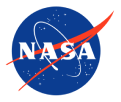
Ryan Park
Senior Research Scientist and Principal Engineer - NASA's Jet Propulsion Laboratory (JPL)
University of Michigan
Ph.D., M.S.E., Aerospace Engineering
Pennsylvania State University
B.S., Aerospace Engineering
I took an orbital mechanics class when I was a sophomore in college. On the first day of the class, the professor gave a beautiful lesson where he derived equations that described the motion of planetary bodies. I was fascinated. I fell in love with space. At the end of this class, I was sure that I wanted to pursue my career in space engineering and science.
My doctoral thesis topic was about navigating a spacecraft in deep space. After receiving my Ph.D., I started my career at NASA’s Jet Propulsion Laboratory as a navigation engineer for the Dawn mission. From the spacecraft’s launch in 2007 to its arrival at asteroid Vesta in 2011, I had an amazing experience as a member of JPL’s Dawn flight team. I was exposed to an extraordinary level of detail about what is required to navigate a highly sophisticated spacecraft. During Vesta operations, I wanted to apply what I was learning to natural planetary objects, which led me to join the Solar System Dynamics group.
I am a principal engineer and supervisor of the Solar System Dynamics group at JPL. My group is responsible for predicting the orbits of all natural planetary bodies, such as planets, planetary satellites [moons], asteroids, and comets. We also provide associated physical properties, such as gravity fields and rotational parameters.

I am also the project manager of the Center for Near-Earth Object Studies (CNEOS), which is the NASA program responsible for monitoring the Earth impact probability of potentially hazardous objects.
On the instrument side, I am the principal investigator of the Advanced Pointing Imaging Camera (APIC), an imaging system being developed for planetary geodesy, the science of determining the exact size and shape of bodies in the solar system.

On the research side, I am a science co-investigator for the Juno, Psyche, and Europa Clipper missions, exploring the interior structure of planetary bodies.
Lastly, I am an adjunct professor at the University of Southern California, where I very much enjoy teaching two graduate-level orbital mechanics classes.
Please be patient! Developing and executing a flight mission takes a long time (sometimes decades), and the space industry has widely varying ups and downs. It may not seem obvious, but there are actually many opportunities. Work hard, be open-minded, and be ready to grab it when an opportunity shows up.
